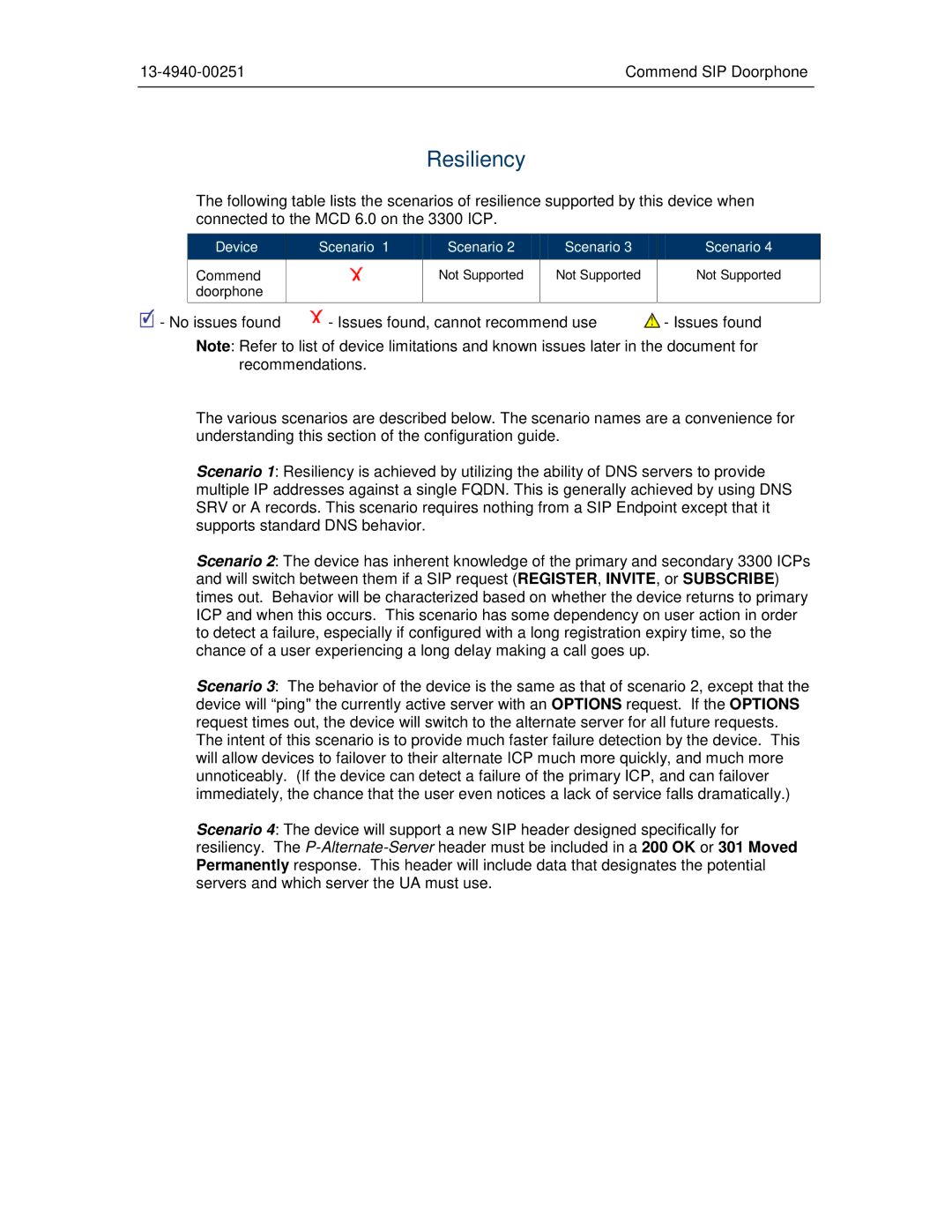MCD 6.0 specifications
Mitel MCD 6.0 is a robust and versatile communication platform that offers advanced features designed to enhance business productivity and streamline communications. This platform is particularly known for its flexibility, scalability, and a comprehensive suite of tools that cater to various organizational needs.One of the main features of Mitel MCD 6.0 is its unified communications capability. This allows users to integrate various communication channels, including voice, video, and messaging, into a single interface. This integration facilitates seamless collaboration among team members, enhancing efficiency and reducing the response time to customer inquiries.
The platform supports a wide range of connectivity options. Mitel MCD 6.0 is designed to work in both on-premise and cloud environments, providing businesses with the flexibility to choose the deployment model that best suits their operational needs. This hybrid deployment approach ensures that organizations can scale their communication infrastructure as they grow, without being locked into a single infrastructure type.
Mitel MCD 6.0 also offers advanced call management features. Users can manage calls anytime and anywhere with functionalities such as call forwarding, voicemail-to-email, and automated attendant services. These features ensure that no call goes unanswered and help maintain a professional image for businesses.
Another significant aspect of Mitel MCD 6.0 is its integration capabilities. The platform can integrate with numerous third-party applications, allowing for tailored solutions that meet specific business requirements. This interoperability enables organizations to create customized workflows and enhance productivity by utilizing existing applications alongside the Mitel system.
Moreover, the platform harnesses advanced technologies such as Voice over IP (VoIP) and session initiation protocol (SIP) to deliver high-quality voice communications. VoIP technology enables cost-effective long-distance calls and reduces overall communication expenses for businesses. Additionally, Mitel MCD 6.0 incorporates security protocols to protect sensitive data and ensure secure conversations.
The user-friendly interface of Mitel MCD 6.0 is designed for ease of use, ensuring that employees can quickly adapt to the system and maximize its functionalities. The solution is supported by comprehensive training resources and customer support, which further enhances user experience and satisfaction.
In summary, Mitel MCD 6.0 is a cutting-edge communication solution that addresses diverse business needs through its unified communications, flexibility, advanced call management, integration capabilities, and user-friendly design. It stands as an essential tool for organizations aiming to enhance collaboration, improve efficiency, and drive overall business growth.

